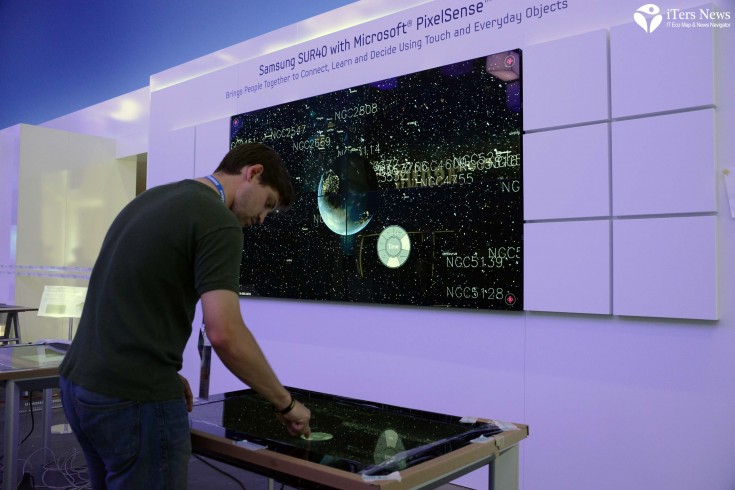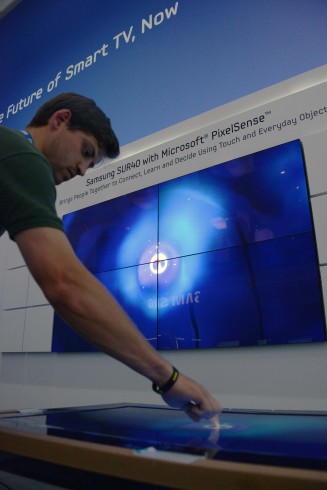(iTers News) - Awash in a wealth of tiny sensors like infrared, multi-touch, and CMOS image sensors, surface PC is a precursor of how Microsoft will revolutionize the UI, or, user interface of computing devices -the way people interact with machines.
About one and half a years after Microsoft first introduced the conceptual product of multi-touch-enabled table-top Surface PC in 2011, the OS titan debuted a tablet PC version of Surface PC, a hybrid slate PC, in July 2012. Yet, the hybrid Surface PC slate is short on what Microsoft originally envisioned in terms of UIs. .
A look-around across Samsung's IFA 2012 booth happened to take a peek into a Surface PC tabletop kiosk system that comes topped with a multi-touch-capable LCD screen, enabling users to tap, swipe, tilt, and pinch the zoom on-screen objects in the same way that they fiddle with smartphones, or tablet PCs.
The multi-touch screen-topped table-top Surface PC kiosk system completely matches what Microsoft defined as Surface PC in the CES 2011 trade show in terms of the shape and the way that users interface with it.
By combining its expertise in hardware with Microsoft's Pixel Sense technology and OS system, Samsung Electronics has built the Surface PC kiosk system called as Samsung Sur 40.
The Surface PC kiosk system is specifically designed for commercial B2B applications like unmanned hotel reception, or information desk systems, selling for premium prices.
What make it different from other multi-touch computing devices is that the touch screen-topped Surface PC kiosk table comes complete with multiple sensors like infrared sensors, vision sensors and touch sensors, allowing it see, feel and understand users' gestures and motions.
For example, its touch screen has up to 52 touch points. And, it allows multiple people to work on the screen, simultaneously.
According to Ian Anderson, sales and field engineers with Samsung Electronics U.K., its built-in infrared sensors and mirrors on the top of the pixel of the screen allow users to interact with on-screen objects. For example, the infrared mirrors and sensors reflect users's hands to mirror them on the screen.
The Surface PC information kiosk table also features a fluid UI, which can track multi-touch points, allowing users to tile, pinch the zoom, and magnify on-screen objects.
Video & Photo by JH BAE




